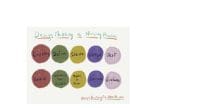A quick Google search for “patient sitter jobs” yields 47 million results. A similar search for “registered nurse jobs” produces 454 million results. These numbers tell us that indeed nursing-related jobs are in high demand. For many nursing students, the former is a stepping stone for the latter. While in nursing school, I (JJ) took on a part-time job as a nurse’s aide-come-patient-sitter, an unglamourous title for a supporting role. The primary impetus for using patient sitters is to prevent patient falls or self-harm and forego the use of physical restraints. In spite of the lack of rigorous evidence measuring its patient safety benefits, sitters have become a ubiquitous bedside presence. Perhaps, its greater benefit isn’t measured in the number of falls prevented or its impact on the hospital bottom-line but in affirming that human companionship is indispensable. No wonder that many hospitals have a written policy for nurses to sit down with a patient at least once during the shift.
Once upon a bedside
Nurses in Victorian times, coming on the heels of Florence Nightingale, were employed by wealthy families, not in “med-surg” units. In an era when poultices and bloodletting were the norm, nurses did pretty much the same thing as modern-day patient sitters—they kept the patient company, assisted the patient with meals, provided comfort measures, and managed the traffic of visitors. In Nightingale’s most famous work, Notes on Nursing, a variation of the word “visit” appears 25 times in the 76-page book. It seems the companionship of well-meaning friends and family was, and still is, valued in the healing process. Then as now, even when there is not much that can be done for the illness, we still have much to say to one another, if only to ease the grief of accepting what cannot be changed.
The 1871 painting, The Doctor, by Sir Luke Fildes somehow captures the spirit of the time. A general practitioner (a primary care provider in the United States) sits at the bedside of an impoverished and sick child. The brooding image of the doctor, leaning almost in a tripod position and gazing intently at the patient is a vivid picture, illustrates that in sitting with patients, presence is all.
A bedside education
In the oncology unit where I (JJ) work, I’m sometimes assigned to be a “nursing companion” to do one-to-one observation of patients who are at risk for fall or elopement or who might pull out medical devices. The sitter is like a human alarm system and caregiver rolled into one—a very intimate role. Except for the brief morning rounds and routine nursing assessments and medication administration, the patient is essentially alone for long stretches of time. While preventing the patient from pulling out their I.V. line is my primary charge, I realize it’s the bond that I choose to make with the patient for the 12 hours that I am with them that can make a meaningful difference, for both the patient and myself. In between feeding the patient or holding their hand during their breathy agitated states, I catch myself ruminating on fragments of conversations I’ve had with them or moments of contented serenity as they sleep. Watching the nurse inject or infuse a medication, I wonder if the patient is thinking of the same things I am thinking. I sometimes become the patient’s voice and hazard to ask, “What does it do?” The answers I get are a great study on the challenges of patient teaching, and I dare not remind the nurse to use shorter words and to ditch the jargon.
The pandemic put an abrupt end to nursing clinicals as we know it. As nursing school became a hands-off education and lectures continued their soporific life via Zoom, I (JJ) was lucky to work as a nursing companion under the specter of COVID-19. Sitting down for hours with a patient with delirium is genuinely humbling; bowing to the fragility of the mind and realizing what a terrible thing it is to waste. Chatting with a lucid older adult patient during one-to-one observation gives the sitter a narrative glimpse of a life once lived and a history lesson. Can you imagine a life without meaningful conversation? In this ongoing pandemic, the isolation of patients and the ban on visitation have made social stimulation as essential as the essential workers themselves.
Sitting beside the patient rewards the sitter with emotional nimbleness that allows them to make sense of human frailty—something that nursing students will need to muster resilience. In the days before electronic health care records, I (FL) used to write my nurse’s notes while at the patient’s bedside. This exercise prompted me to recall important events I had to document at the same time keeping the patient company. Once, I stumbled into a moving bedside scene. The sitter was standing on the left side of the bed with one of his hands clasped together with the patient’s, as if they were in the middle of an elaborate handshake ritual seen among teenagers. The sitter’s right hand was resting lightly on the patient’s left shoulder, forming a reassuring open-arm C-shape. The image was like a still life painting, except that what I saw were not inanimate objects, but two people—one upright the other supine—affirming that there is still life, even in the most vulnerable time.
Sitters serve as a patient’s lifeline. But they are more than that. They become the patient’s confidant, their voice, their advocate, and their connection to the outside world. Sitters also are the patient’s most devoted pupils. When we reorient the confused patient, we’re reminded to weigh and consider the importance of the here and now. As I (JJ) inch closer to becoming a registered nurse, I’m grateful for the many patients I have sat with.
One of our (JJ and FL) favorite interactions is truly listening to the patient’s reminiscence, a vital first step in empathy and a testament to the notion that walking down memory lane is best done with a companion. To some, working as a sitter is a stepping stone, we believe it is foundational to the art of nursing.
Jordon Jew is a nursing student and Fidelindo Lim is a clinical associate professor at New York University – Rory Meyers College of Nursing. Jew also is a nurse’s aide at New York-Presbyterian Weill Cornell Medical Center in New York City.


















